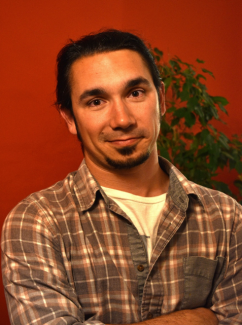Aurélien de la Torre is awarded an ERC Consolidator grant
On Tuesday 3 December 2024, the European Research Council (ERC) announced the laureates of its Consolidator grants. A total of €678 million in funding will be shared between 328 winning scientists, including Aurélien de la Torre from Université Paris-Saclay.
Aurélien de la Torre is a CNRS research fellow at the Institute of Molecular Chemistry and Materials of Orsay (ICMMO – Univ. Paris-Saclay/CNRS). He has been awarded an ERC Consolidator Grant for his project, CUBIC, Chiral bUilding Blocks with bRidged or Caged polyclic structures.
“Drug candidates should have a higher proportion of Csp31 over Csp2 and Csp and a greater number of stereogenic centres”. This is the main message of F. Lovering et al. in their seminal article “Escape from Flatland” published in 2009 and which induced a paradigm shift in drug design.
The first recommendation (higher proportion of Csp3) has opened a new field of research over the last 15 years, in a quest aiming at the synthesis and functionalisation of small rigid polycyclic (bridged or caged) molecular scaffolds2 , used as building blocks in medicinal chemistry and particularly as bioisosteres3 of aromatics. This quest has strongly influenced academic and industrial research in organic and medicinal chemistry. However, the second recommendation (more stereogenic centres4) was largely unmet due to the lack of efficient methods for the enantioselective synthesis of such chiral rigid polyclic structures. The CUBIC project aims to develop an array of synthetic methods involving diverse enantioselective cycloaddition5 reactions and cascade transformations to fill this essential gap in knowledge.
ERC Consolidator grants support the best of exploratory research in all fields of research. They reward coordinators of European projects who have obtained their PhD 7-12 years ago. The grants can be awarded for up to a total of €2 million for a period of 5 years.
Notes:
1 Csp3 is a type of carbon whose bonds are formed from a particular combination of its orbitals. This gives it a tetrahedral shape, like methane, where the carbon is linked to atoms with single bonds.
2 in organic chemistry, polycyclic bridged or caged molecular scaffolds are molecules that contain several rings connected in a specific way, with at least one common atom to three rings.
3 A bioisostere is a functional group or chemical compound with properties similar to those of a biomolecule, offering a comparable biological action. In drug design, it is used to improve efficacy or reduce toxicity without drastically altering the chemical structure.
4 A stereogenic centre is an atom in a molecule that can create different versions of that molecule, simply by changing the way its groups are oriented in space.
5 Enantioselective cycloadditions are chemical reactions which form rings whilst producing a preferred version of an asymmetric molecule, a bit like choosing to make one hand (left or right) instead of two.

